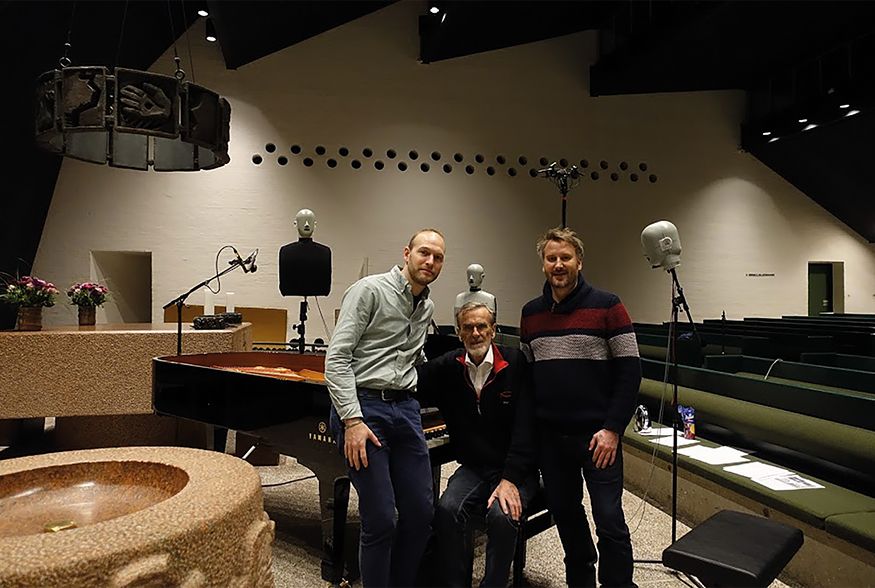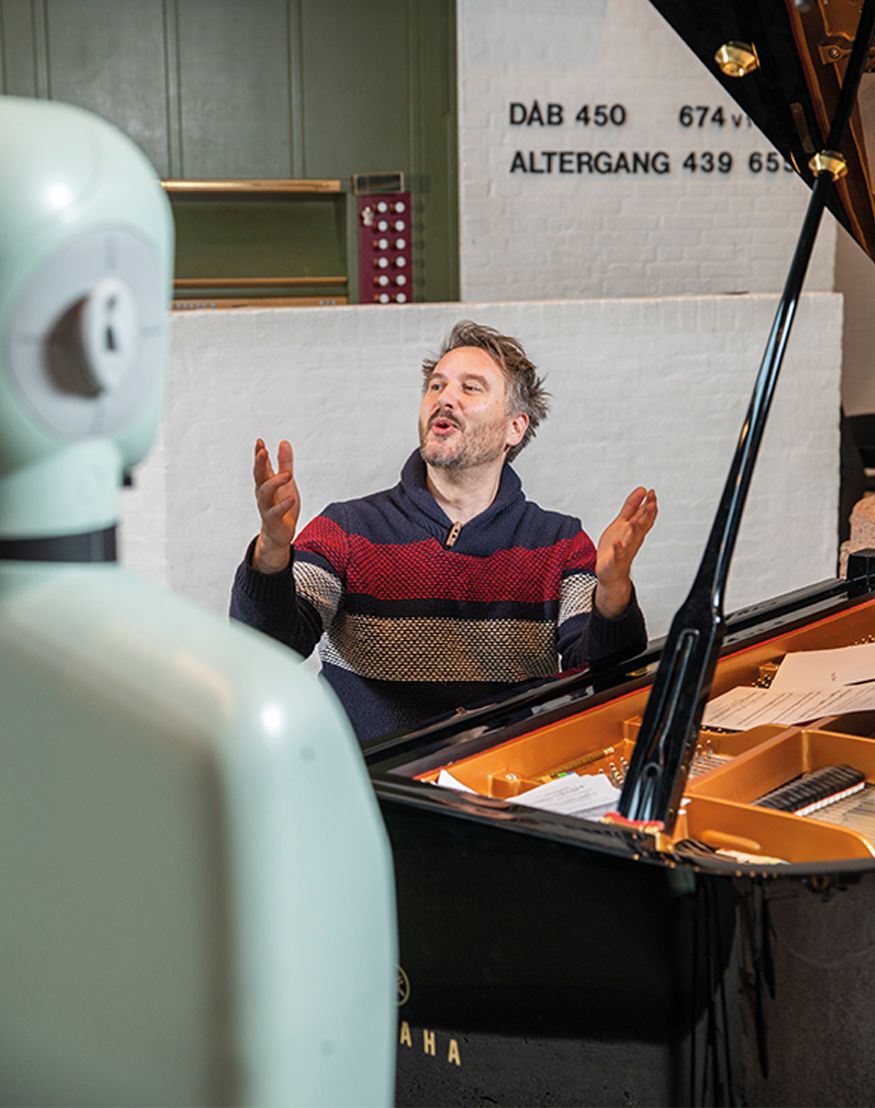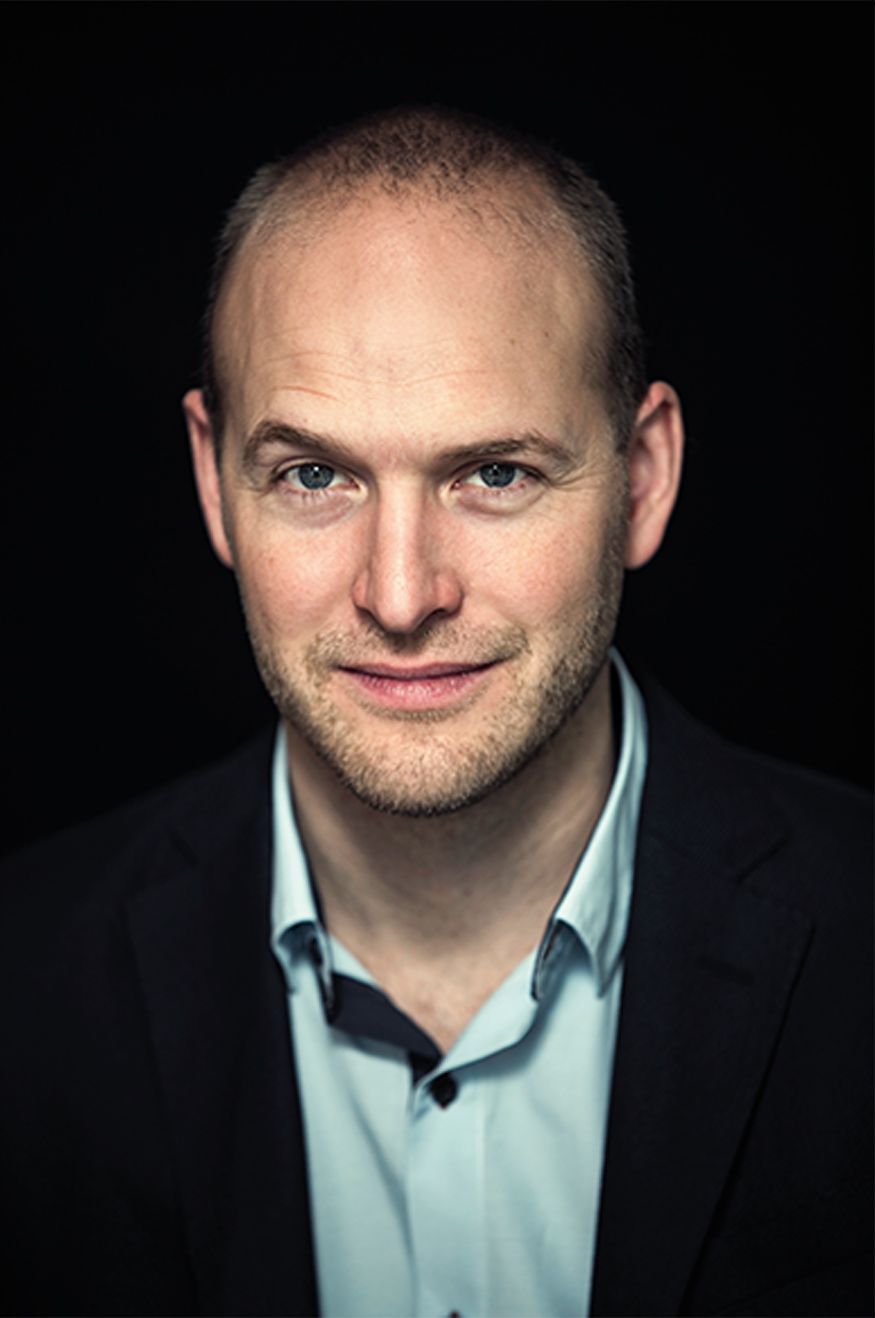To create new experiences in sound and new concert forms, sound engineer Arne Bock and I decided to explore the possibilities of auditory augmented reality (AR) installations via binaural recordings. We wanted to investigate how the sound quality of Brüel & Kjær head and torso simulators (HATS) is perceived compared to ordinary stereo and surround set-ups. We also wanted to experiment with binaural recording techniques in the musical domain and look at the added musical value of listening to binaural versus stereo and surround playbacks. Our interest lies in the listening experience, a subjective use of sound recordings.
The project was centred around Ellevang Church, which is in Risskov, near Aarhus in Denmark. The church was built in 1974 and was specially designed with an emphasis on good building acoustics to ensure that the preacher could be heard throughout the worship space. The result is a room providing a good, transparent sound image without too much of the reverberation typically found in churches, thus ideal for playing four original chamber music compositions using the church’s new Yamaha grand piano.
RELATED PRODUCT
High-Frequency HATS Type 5128
We had three different HATS at our disposal for our recordings – a sound quality HATS (Type 4100) where the microphone is mounted at the entrance of the ear canal, a HATS with a cylindrical ear canal and calibrated ear simulator (Type 4128), and a high-frequency HATS with a human-like ear canal and calibrated eardrum simulator (Type 5128).
With simultaneous recordings made of the room’s ambient sound and by close-miking next to the piano, we would be able to experiment with the sense of depth during the mixing phase. Our choice of HATS positioning was, therefore, totally based on the best musical result. After some experimentation, we chose to use the high-frequency HATS for the ambient sound (that is, further away from the piano and with complete balance between the direct sound of the piano and the room sound), as it was the most directional of the HATS variants and maintained a good sound focus. The other two HATS were placed around the piano to highlight the different qualities of the piano’s sound, but without too much reflective content from the room.
For comparison purposes, we installed a “Williams Star” surround microphone array at its ideal height behind the high-frequency HATS and placed a stereo close- miking system over the piano strings for use later during the mixing phase.
Finally, with the addition of surround microphones, pianist Erik Kaltoft was ready to play three music pieces entitled Nos Gypédies.
Kristian Rymkier
Composer and musician at the forefront of the Danish avant-gardeIn addition to composing chamber, vocal and orchestral pieces, Kristian Rymkier also works with sound installations and digital composition with focus on 3D music, composed with a spatial awareness as a musical element, which is listened to via headphones.
- Master’s degree from the Conservatoire National Supérieur de Musique et de Danse de Paris
- Bachelor’s degree from The Royal Danish Music Academy
- Bachelor’s in jazz saxophone from The Royal Dutch Conservatory in Den Haag
Recordings
During the first day of recording we were surprised to discover on playback that there was a strong accentuation of the high frequencies, resulting in a thin sound image, and I was a little sceptical about whether any of the HATS recordings would be of any use. The balance between low and high frequencies was very dissimilar from normal recording microphones used in standard classical music recording. The HF-bias was probably due to the respective positioning of the microphone diaphragms inside the ear canals of the three HATS.
To transfer the HATS microphone responses back toward diffuse field response, recording engineer Arne Bock spent some time programming equalizers for each HATS channel using frequency-response tables supplied by Brüel & Kjær as a guide. What a difference! The effort that went into equalizing the channels was worthwhile. The warmth returned to the replayed sound and the result gave us something really unique.
Arne had never doubted that the equalizers would be able to clean up the sound image, but not to the extent revealed by the results. We then spent a day making a recording of Les Champs and making binaural recordings of the piano by HATS being moved around the room in real time.

Results
We discovered that High-frequency HATS Type 5128 at the chosen ambient position gives a good sense of 3D and a super-clear sound image, including rich detail of the grand piano’s sound and with precise room information. Compared to Sound Quality HATS Type 4100, Type 5128 gives very precise location information, proven by panning the HATS within the sound field and noticing the ease, or not, of small details following the same movement. With Type 5128 the details are sharper and give a deep 3D-experience, especially noticed in the reverberant information that is more precise and defined than the other HATS.
Sound Quality HATS Type 4100 produces a very open, detailed soundscape with plenty of spatial information, with maybe a slightly muddy representation of reverberant sounds.
HATS Type 4128 lies between the other two regarding depth and details; better than Type 4100, but not as intense as Type 5128.
Overall, it seems that having Type 5128 as the main receiver is the best choice, giving our recordings well-defined details and spatial information. However, when using Type 5128 in a close-miking situation it seems that the sound recorded is too focused and doesn’t, for example, capture the full timbre of the piano. Type 4100 and Type 4128 appear to be better for close-miking where the level of the direct source is more dominant than the reverberant sounds.
Binaural recordings made with the sound quality HATS moving in the room provide a very fine, smooth sense of a sound source traversing the space. We will use these recordings that contain motion information as source material for new digital compositions.
By using a close-miked recording as a source, we will test whether digital binaural plugins in the mixing chain can reproduce the same quality of sound and space information as a Brüel & Kjær HATS recording at a set location. The plug-in allows us to spatially move the source in x- and y-planes, so we can virtually move it from being by the piano to the same spot where the HATS was in order to make direct comparisons. The last step will be to down-edit the recordings of the four compositions to make twin-tracks in both stereo and binaural formats. For best effect, the binaural format should be played through headphones to reproduce the music with a clear sense of 3D space – listeners should feel that their ears replace the HATS ears.
Arne Bock
With extensive experience in many different music styles, Danish Tonmeister and sound designer Arne Bock is one of the most sought-after sound designers in the area of sound design, live audio and recordings. He has worked with many renowned symphony orchestras such as the Royal Concertgebouw Orchestra, The Netherlands Radio Philharmonic Orchestra and the Swedish Radio Symphony Orchestra and with renowned composers such as Steve Reich and Jean-Baptiste Barrière. Arne has also programmed special solutions for surround sound in use with live amplification to provide special 3D sound experiences in concert halls.

뉴스레터를 구독하고 소리와 진동에 대한 최신 이야기를 만나보세요



